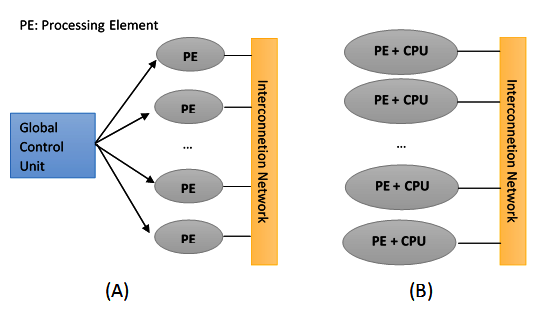This class of parallel computers is the most general and most powerful class, according to Flynn's classification. This contains n processors, n instruction streams, and n data streams. Each processor has its own control unit and local memory, which makes MIMD architectures more computationally powerful than SIMD architectures.
Each processor operates under the control of a flow of instructions issued by its own control unit. Therefore, the processors can potentially run different programs with different data, which allows them to solve subproblems that are different and can be a part of a single larger problem. In MIMD, the architecture is achieved with the help of the parallelism level with threads and/or processes. This also means that the processors usually operate asynchronously.
Nowadays, this architecture is applied to many PCs, supercomputers, and computer networks. However, there is a counter that you need to consider: asynchronous algorithms are difficult to design, analyze, and implement:

Flynn's taxonomy can be extended by considering that SIMD machines can be divided into two subgroups:
- Numerical supercomputers
- Vectorial machines
On the other hand, MIMD can be divided into machines that have a shared memory and those that have a distributed memory.
Indeed the next section focuses on this last aspect of the organization of the memory of MIMD machines.
